Abstract
Further analyses of the Medical Research Council's trial of drug treatment of mild hypertension were carried out to provide more detailed information on the benefits associated with treatment in various subgroups. The four main considerations in establishing a rational treatment policy were, firstly, the significant reduction in the stroke rate with active treatment; secondly, the absence of a significant overall treatment effect on myocardial infarction; thirdly, the knowledge that of 100 untreated men in the highest risk group (those aged 55-64 with high systolic pressure at entry who smoked), five would be expected to suffer a stroke and 10 a coronary event within five years; and, fourthly, the cost, in clinical and financial terms, of prolonged treatment. In the high risk group of 100 men treatment with bendrofluazide would result in the prevention of three or four of the five strokes but would have little effect on the expected numbers of myocardial infarctions. Treatment with propranolol in non-smoking men in the highest age and blood pressure categories would lead to a reduction in the number having strokes from three to one or two and might possibly reduce the number experiencing myocardial infarction from seven to four. Smokers treated with propranolol would not be expected to benefit. In women avoiding smoking was particularly important. The considerations for preventing stroke were similar to those in men, but no clear guideline was possible on the effect of lowering blood pressure for preventing myocardial infarction in women.
Drug treatment reduces the attack rate of certain events in mild hypertension but should not be prescribed routinely for all patients with the disorder.
Full text
PDF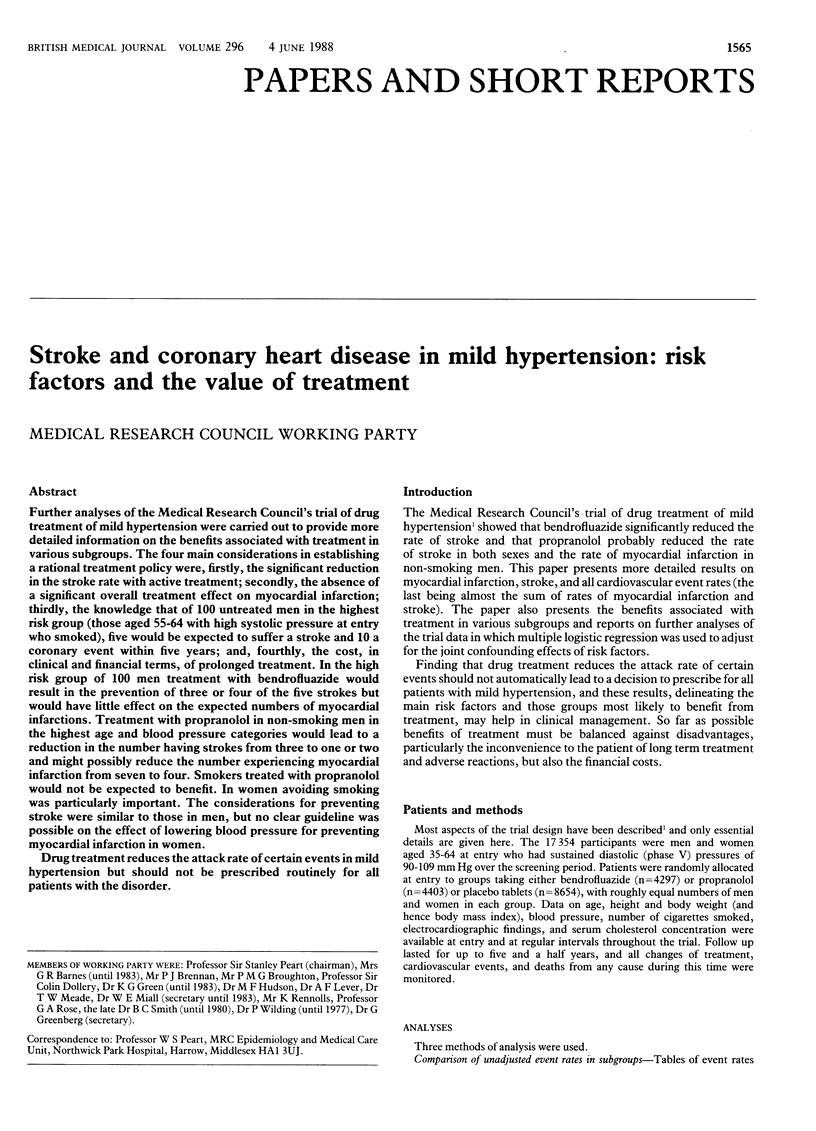
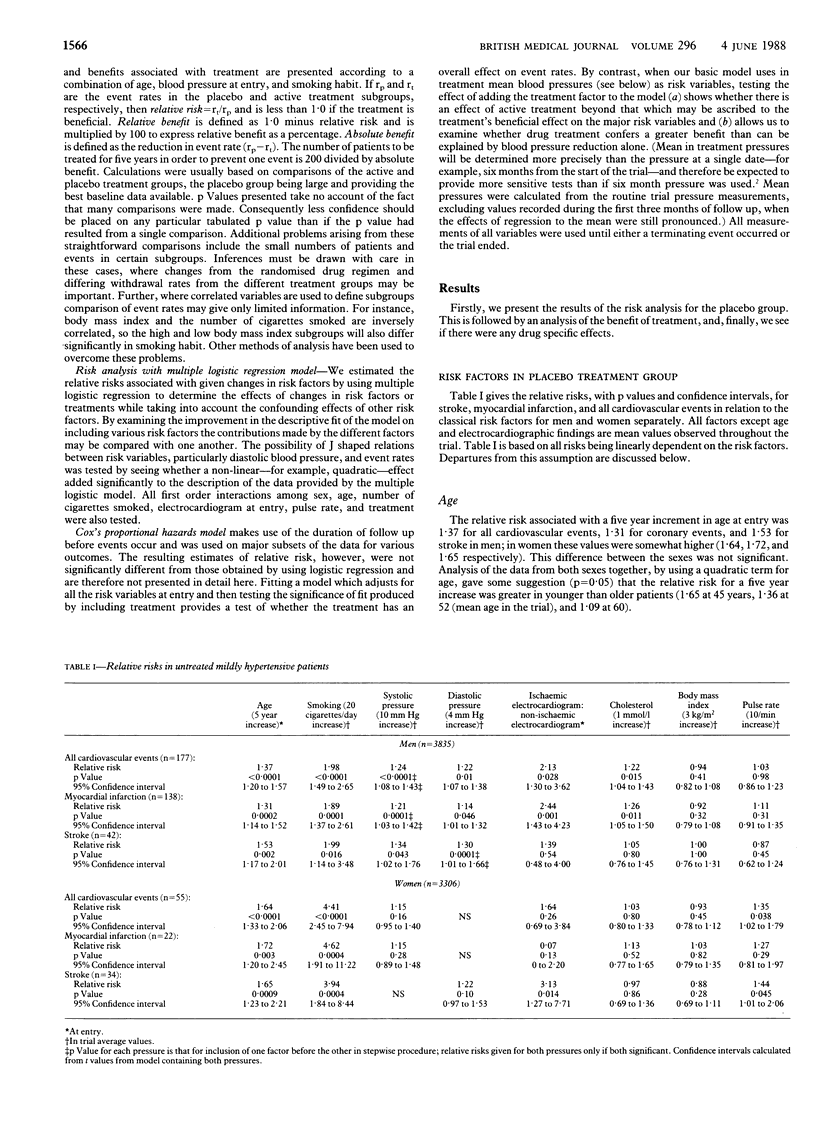
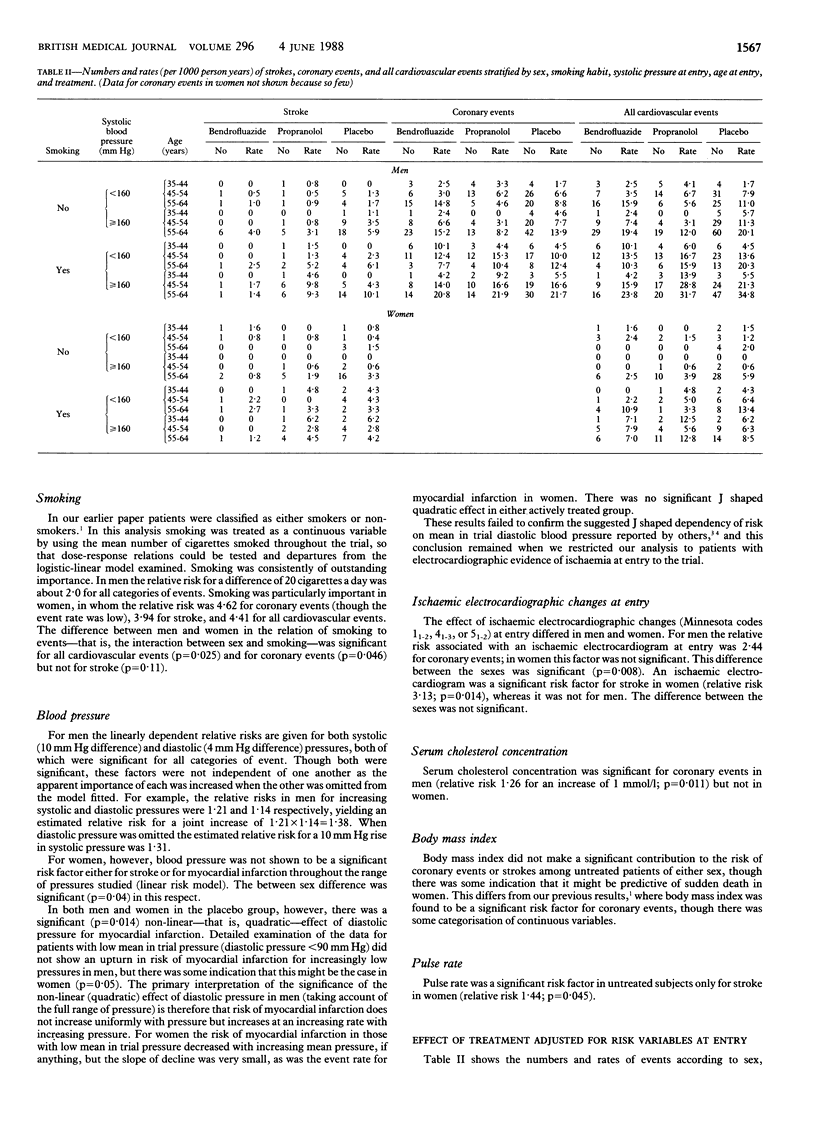
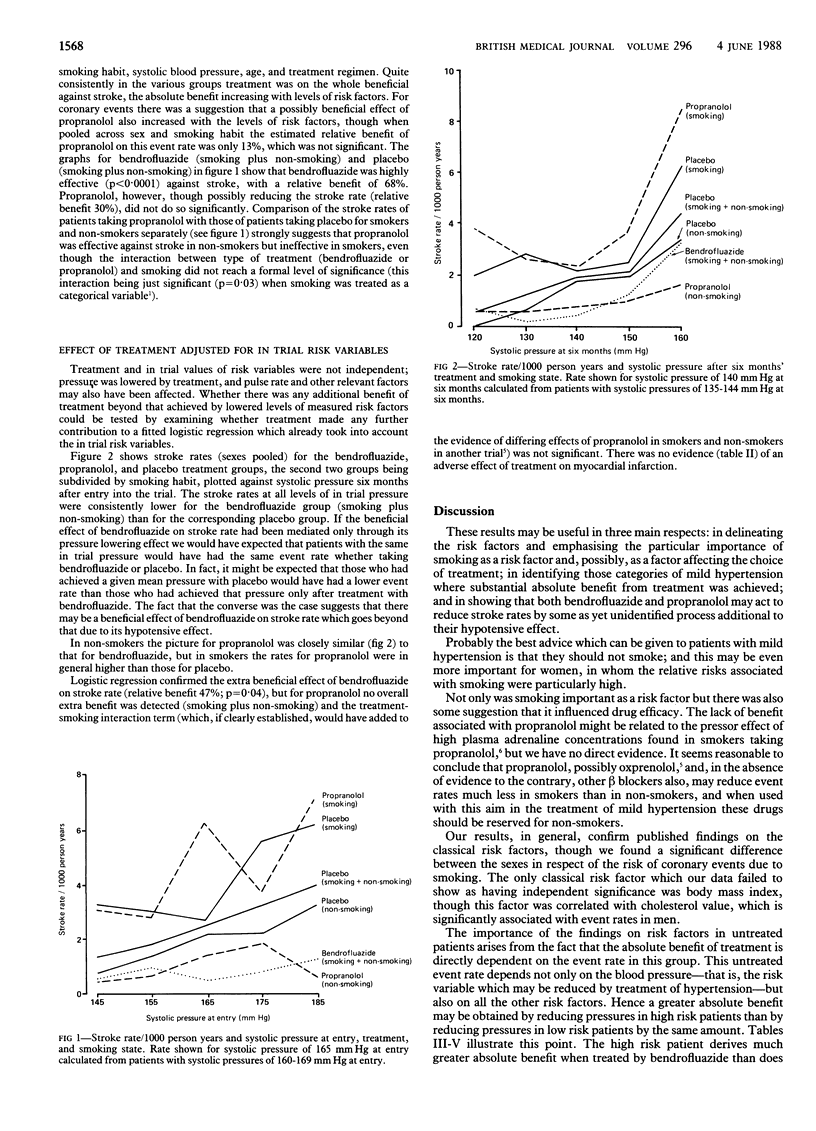
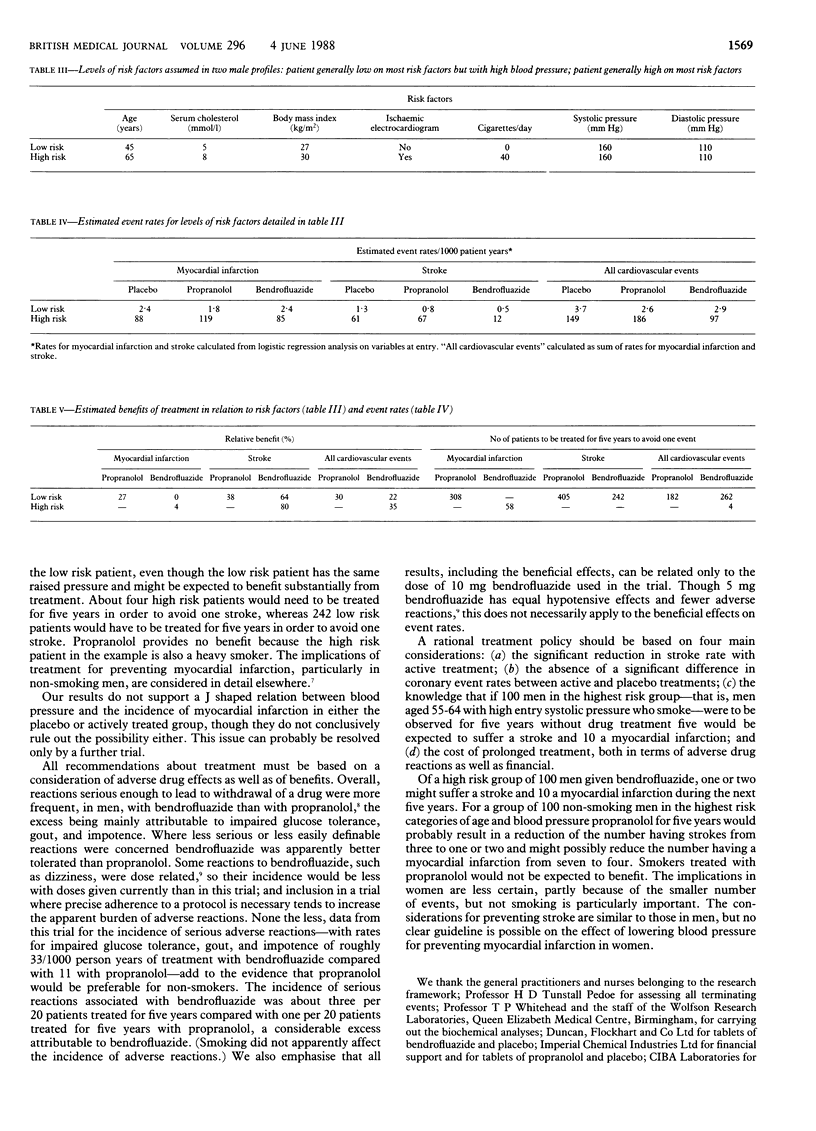
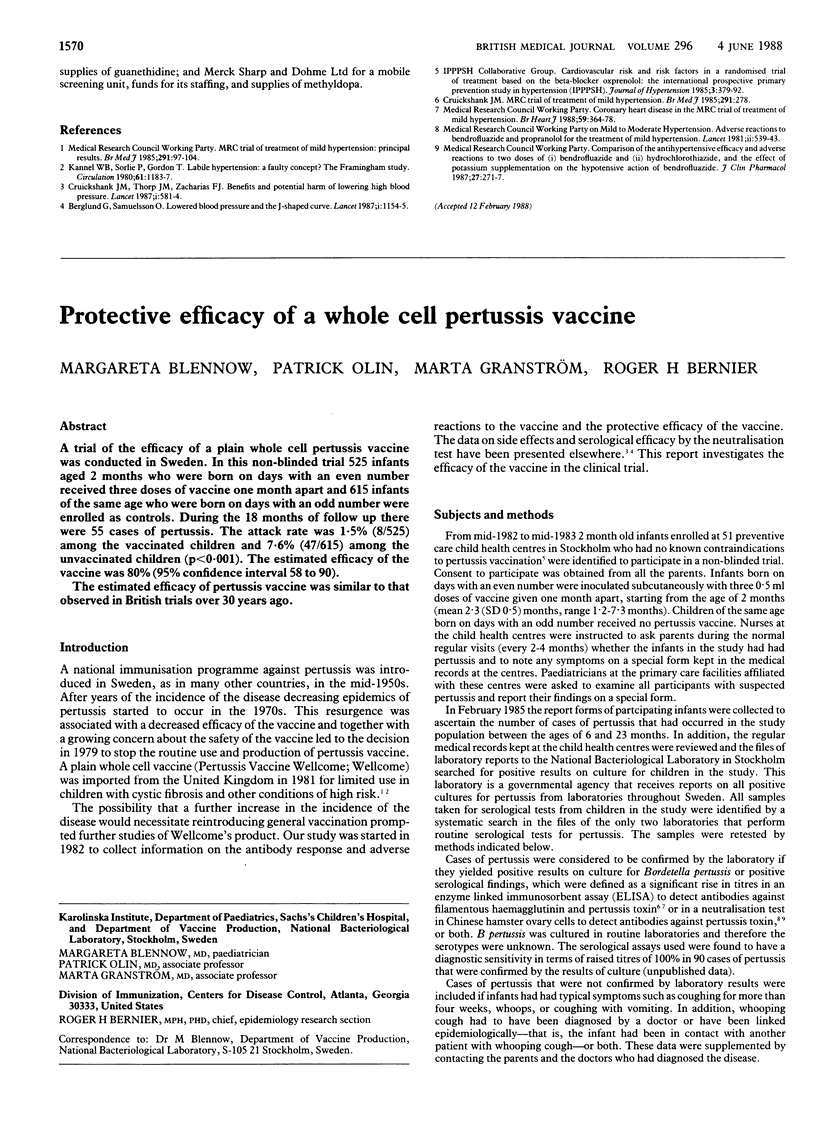
Selected References
These references are in PubMed. This may not be the complete list of references from this article.
- Berglund G., Samuelsson O. Lowered blood pressure and the J-shaped curve. Lancet. 1987 May 16;1(8542):1154–1155. doi: 10.1016/s0140-6736(87)91718-1. [DOI] [PubMed] [Google Scholar]
- Cruickshank J. M., Thorp J. M., Zacharias F. J. Benefits and potential harm of lowering high blood pressure. Lancet. 1987 Mar 14;1(8533):581–584. doi: 10.1016/s0140-6736(87)90231-5. [DOI] [PubMed] [Google Scholar]
- Kannel W. B., Sorlie P., Gordon T. Labile hypertension: a faulty concept? The Framingham study. Circulation. 1980 Jun;61(6):1183–1187. doi: 10.1161/01.cir.61.6.1183. [DOI] [PubMed] [Google Scholar]


